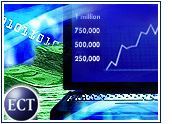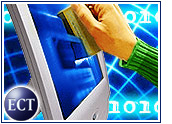
Most business-to-business (B2B) e-commerce technologies focus on automating the physical aspects of a company’s fulfillment and order functions. However, the future success of B2B may lie in applications that hone in on the heart and soul of the Internet itself: the flow of information.
Instead of technology that helps companies get a product from A to B, the new informational model of collaborative e-commerce uses application logic not only to allow the sharing of data in controlled environments, but also to manage work flows.
Once the specific types of B2B processes, such as sourcing or channel management, are codified through application logic, the computer systems of business partners can talk to each other — overcoming language and security differences — to create a seamless information flow.
And that can mean the difference between profitability or bust.
A Grand Design
For example, a company and its partners can become more efficient by improving the exchange of information about a product’s design, during both the design stage itself and throughout the product’s entire lifecycle, according to analyst Jon Derome of The Yankee Group.
Product information can be easily moved to all appropriate decision-makers, Derome told the E-Commerce Times, thanks to the increase in processing power for online computer models, electronic representations and new viewing technologies.
From procurement and marketing to product support and customer service, this blossoming of product design allows multiple parties that are involved in developing a product to share information in real time.
Putting Parts Together
“Design collaboration applications help compress design-cycle times and improve designs for manufacturability,” Aberdeen senior vice president of e-business and enterprise applications David Alschuler told the E-Commerce Times.
Simply stated, according to Alschuler, “Parts can be manufactured for a lower price.”
The result is that each department can make decisions that can help save costs and improve profitability. The marketing team, for example, might know what color is hot this year, thereby helping make a more saleable design.
In addition, the outsourcing process becomes more efficient, potentially saving a business millions of dollars through decisions such as whether a lower-density steel might work in a design just as well as one of higher density.
Not Just Invoices
Improvements in information technology might have an even bigger impact on B2B’s transactional side.
Consider that Electronic Data Interchange (EDI) — which uses a standard electronic system to enable unrelated companies to exchange documents like invoices and purchase orders — has historically been used by larger companies who could afford the expense.
According to Derome, the inclusion of the XML language into the EDI process is transforming the system into one of a much broader and cheaper scope.
“Smaller companies will now be able to move product faster electronically without the traditional EDI expense,” Derome said. “With XML, anyone can define their own transaction set, so a company can define the types of information they want their computer system to exchange, such as regulatory information, licensing, etc., rather than just purchase orders and invoices.”
End of the Paper Trail
However, although technology is helping to streamline the B2B buying and selling process, a recent report from Aberdeen said that there are still untapped ways to make other B2B financial transactions more efficient.
Typically, the financial transactions that support a B2B sale are still carried out through a traditional, time-consuming paper trail. According to Aberdeen, this means that the documentation, financial and payment aspects of a sale usually get mired in the back office.
However, Alschuler said that in order to differentiate themselves within a crowded playing field, Financial Value Chain Management (FVCM) technology providers are expanding B2B e-commerce products to handle multiple aspects of the FVCM process.
“The big advantages are the improved cash flow, reduced data sales outstanding, and the reduced administration cost of processing particular exception processing (such as billing disputes),” Alschuler said.
Power To Authenticate
The new B2B product and services being developed will also help companies with risk management, Alschuler said.
“[These technologies] provide a better ability to authenticate that people are who they say, (as well as) less writeoff of bad debt, less fraud, and less extended payment — using standardized credit scoring databases/algorithms, company histories, or publicly available credit databases,” said Alschuler.
The FCVM market needs standardization and consolidation in the field is inevitable, Alschuler said, however, the end result of using it is still positive because smaller suppliers become more competitive and larger companies more efficient.


























































Social Media
See all Social Media